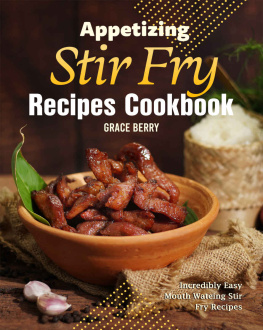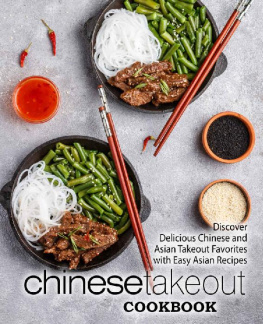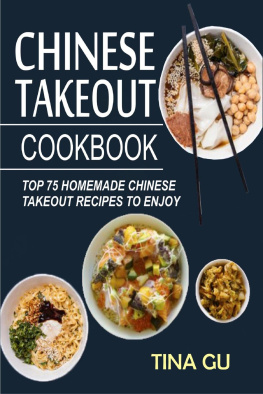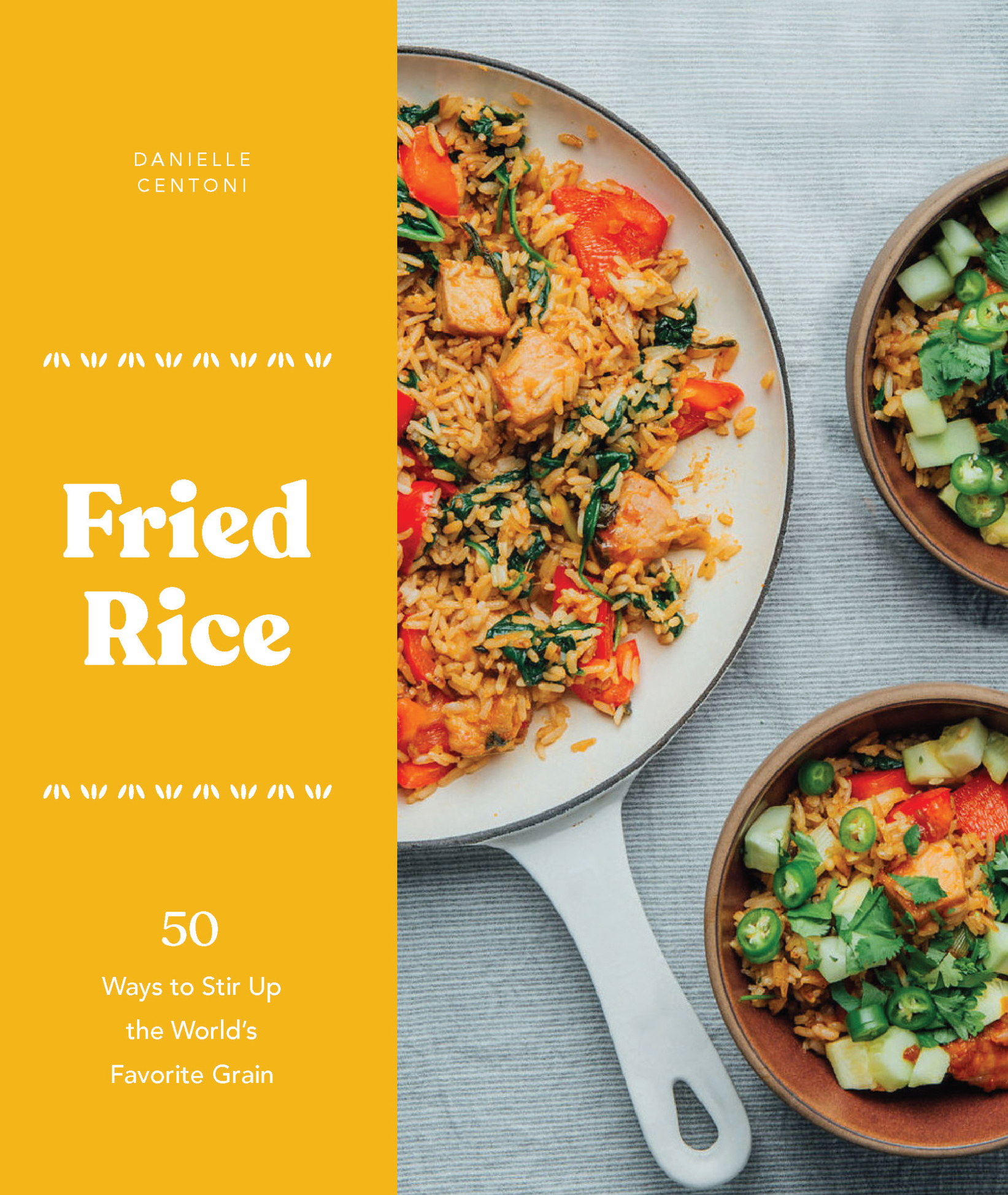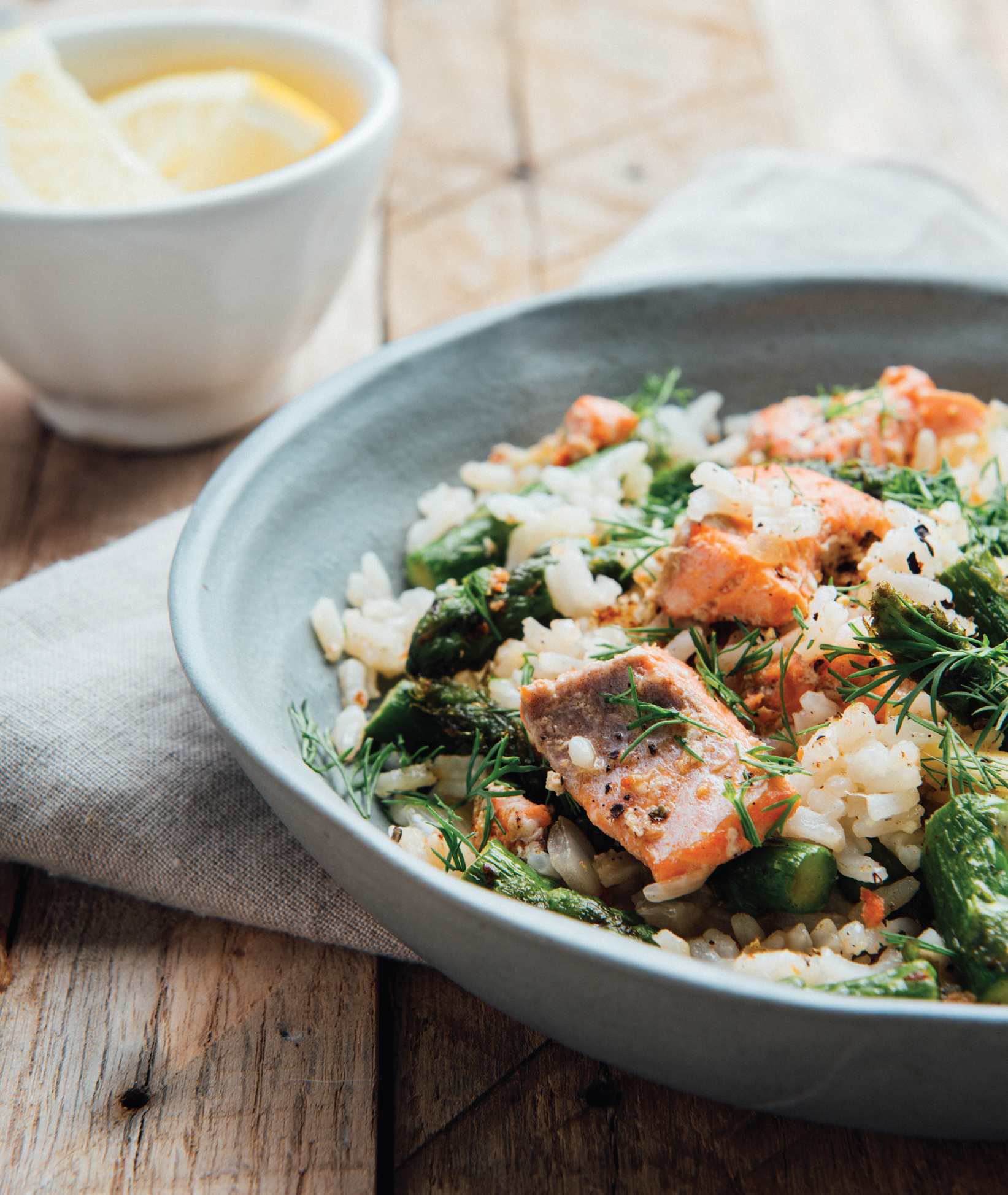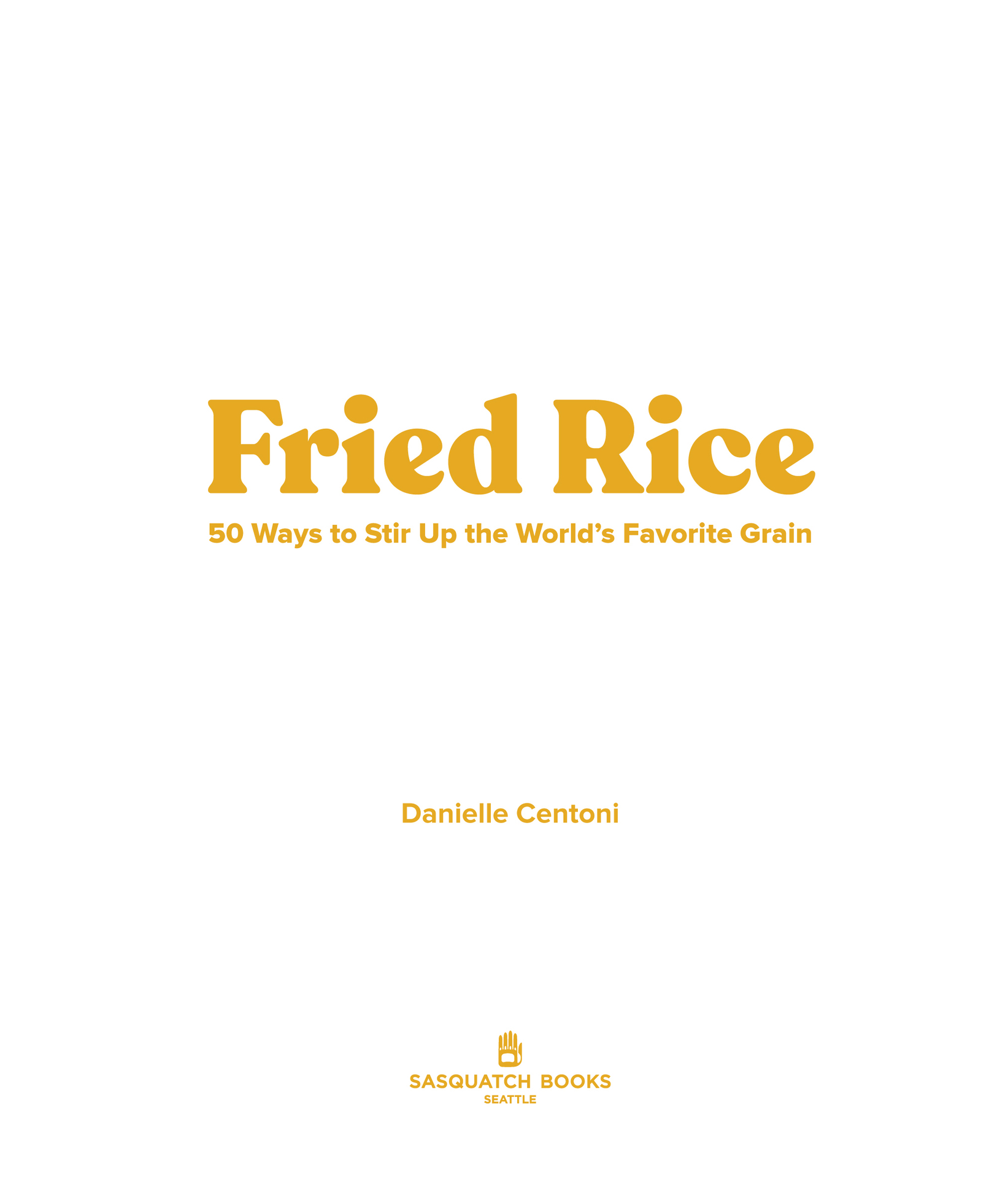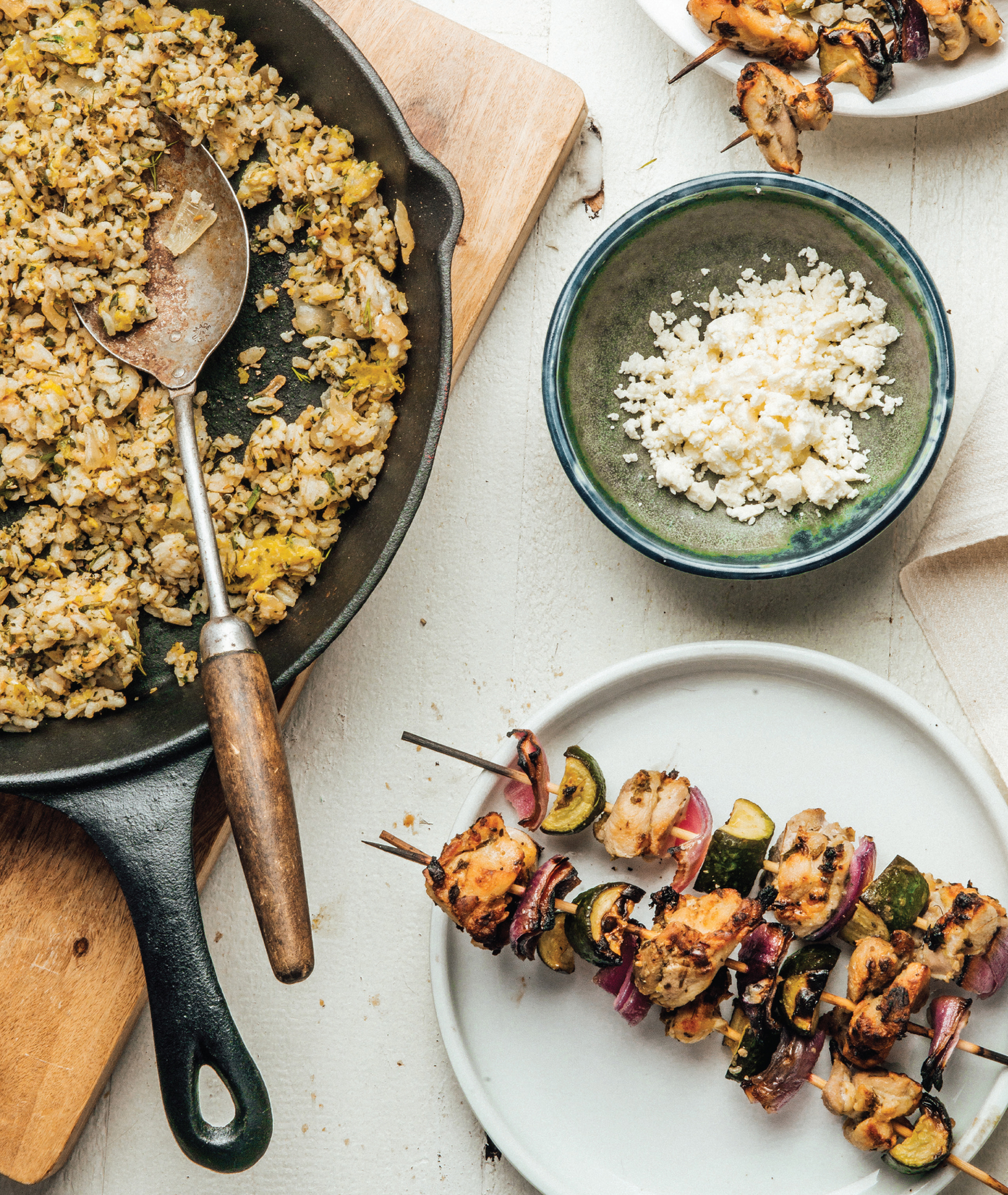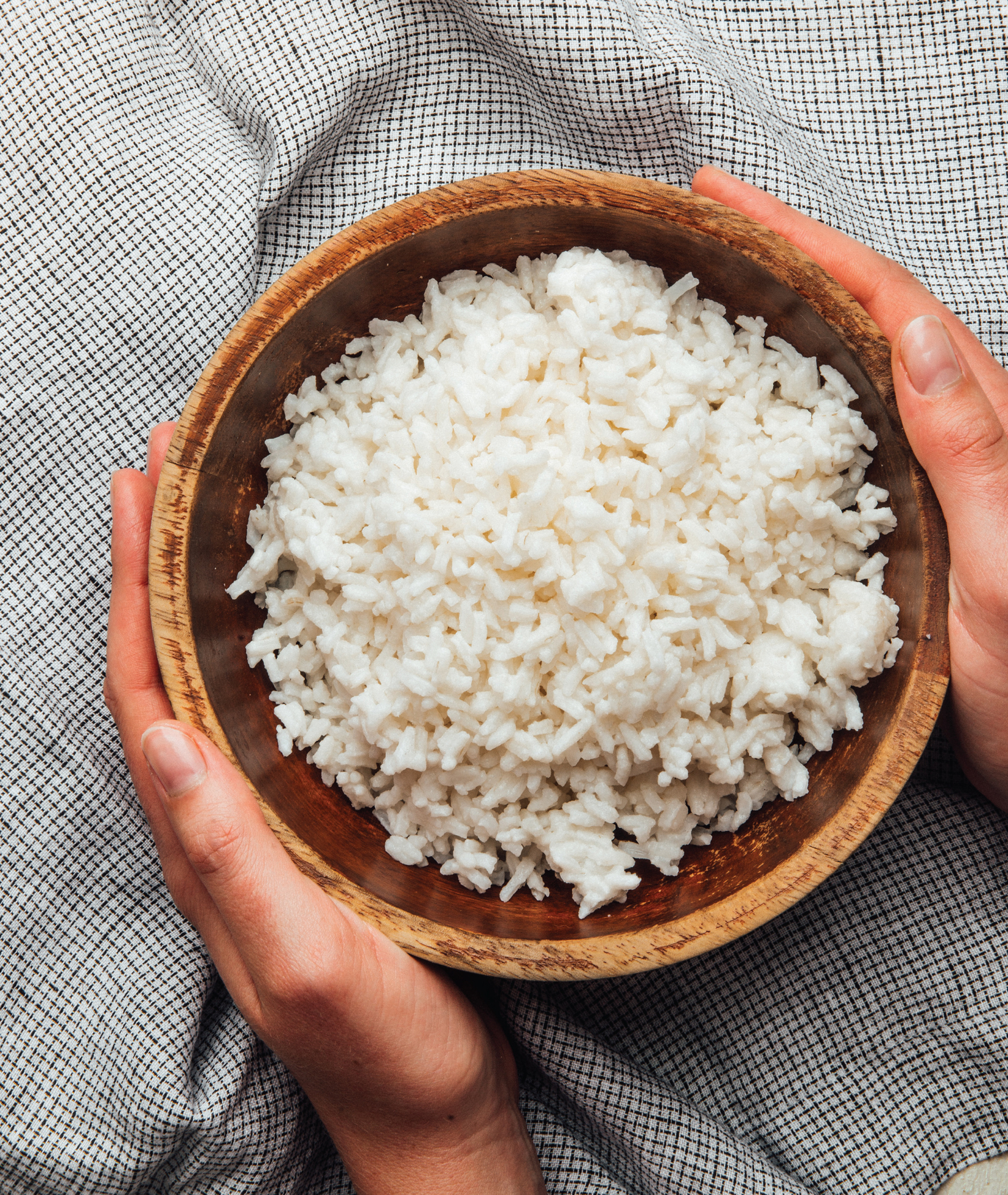All rights reserved. No portion of this book may be reproduced or utilized in any form, or by any electronic, mechanical, or other means, without the prior written permission of the publisher.
SASQUATCH BOOKS with colophon is a registered trademark of Penguin Random House LLC
Names: Centoni, Danielle, author.
Title: Fried rice : 50 ways to stir up the worlds favorite grain / Danielle Centoni.
Description: Seattle, WA : Sasquatch Books, 2019 | Includes index.
Subjects: LCSH: Fried rice. | Cooking (Rice) | LCGFT: Cookbooks.
Introduction
Ive been to plenty of French restaurants that dont have pain perdu on the menu, same goes for Italian joints without pappa al pomodoro and Mexican restaurants without chilaquiles. Theyre classic dishes built on leftovers, ingenious in their use of stale bread and tortillas, but theyre not necessarily a given.
And yet, Ive never been to a Chinese restaurant that didnt serve fried rice. Built on cold leftover rice, its a dish found everywhere, from cavernous dim sum palaces to tiny take-out jointsat least here in the States. Maybe thats because classic fried rice, with its cubes of sweet ham, squiggles of scrambled egg, and polka dots of green peas, is like the cozy sweatpants of Chinese cooking: familiar, flexible, and above all, deeply comforting.
No one really knows who invented Chinese fried rice, though legend has it that Emperor Yang of the Sui Dynasty kicked off the trend in the city of Yangzhou about 1,400 years ago. So its had a long time to become entrenched in the worlds culinary DNA, spreading throughout Asia and beyond. It seems wherever rice is grown or consumed, fried rice will follow.
Fast, cheap, and easy to make, its no wonder the dish is so universally embraced. And wherever it goes, cooks give it their own spin, using ingredients they have on hand, whether its fish sauce in Thailand or hot chilies in Indonesia. After all, thats the whole point of fried riceto effortlessly turn your fridge leftovers and pantry staples into an entirely new dinner.
This book takes the virtues of fried ricefast, cheap, customizableand runs with it, using it as a blank slate for a whole world of flavors. Sure, theres a classic Chinese fried rice in these pages, but theres also Thai Fried Coconut Rice with Pork Satay and Spinach, Hungarian Goulash Fried Rice, and even Cheeseburger Fried Rice (trust me, it works). It turns out, almost anything that has a carb as its base, like pasta or sandwiches, can be turned into fried rice (heads up, gluten-free eaters), and if you already know a dish would taste good with rice, well, game on.
Most of the dishes in this book use plain white rice as the backdrop, but feel free to use other varieties that intrigue you, like brown or even black. And dont be afraid to change things up depending on what you have on hand; try mixing and matching components, swap out veggies as the seasons come and go, and let your own imagination come out and play.
As this book proves, theres really no limit to what you can do with fried rice. Ive pulled inspiration from cuisines and traditions all over the world, so no matter what youre craving, you can give it the fried rice treatment and get it on the table fast.
Tips, Tricks, and Techniques
TYPES OF RICE
Browse your supermarket shelves, and youll see at least half a dozen varieties of rice to choose fromfrom jasmine to basmati to jet-black Forbidden rice. Some packages dont even bother naming the variety and just cut to the chase with labels like short-grain brown or long-grain white. But if you think that many choices is confusing, consider this: the UK-based Rice Association says there are more than forty thousand varieties of cultivated rice in the world.
Thankfully, we dont have to sift through that many options, but its still not always obvious which rice to choose. Heres a primer to some of the most common rice varieties youll encounter.
Long grain
Compared to short- or medium-grain rice, these are longer and more slender, not as sticky, and typically remain distinctly separate after cooking.
Rice starch is made up of amylose and amylopectin. Its the ratio of these two polysaccharides that determines a rice varietys stickiness. Long-grain rice has a higher proportion of amylose, which is the less sticky one. Thats why the grains cook up fluffy and loose instead of clumpy.
Some labels you might see are Carolina and Texmati, but basmati and jasmine are the most well known. Basmati is an aromatic variety of long-grain rice with an almost nutty fragrance. Its strikingly more slender than regular long-grain rice, and its most often used in Indian cooking.
Jasmine is also aromatic, but in a different way, almost like the grassy-coconut notes of pandan leaves. Its commonly used in Thai dishes and cooks up quite a bit stickier than basmati since it has a bit more amylopectin.
Because long-grain varieties of rice are so good at staying separate, theyre ideal for using in fried rice, especially basmati.
Medium grain
Medium-grain rice varieties are just that: medium in length. The varieties that fit into this category usually have a little more amylopectin than long-grain varieties, so they tend to stick together a bit after cooking. Examples include Calrose, which was developed in California, and Japanese


